Warning: Undefined variable $k in /home/nginx/domains/wired2fishcom.bigscoots-staging.com/public/wp-content/themes/understrap-child-0.6.0/functions.php on line 984
Warning: Undefined variable $k in /home/nginx/domains/wired2fishcom.bigscoots-staging.com/public/wp-content/themes/understrap-child-0.6.0/functions.php on line 987
Bass fishing seawalls can be incredibly productive throughout the year; especially in dirty water. If you can find some of these must-fish targets on your next fishing trip, you have a tremendous chance of catching your biggest bass of the year. I’ll explain why these seawall targets hold bass and how to best approach them.
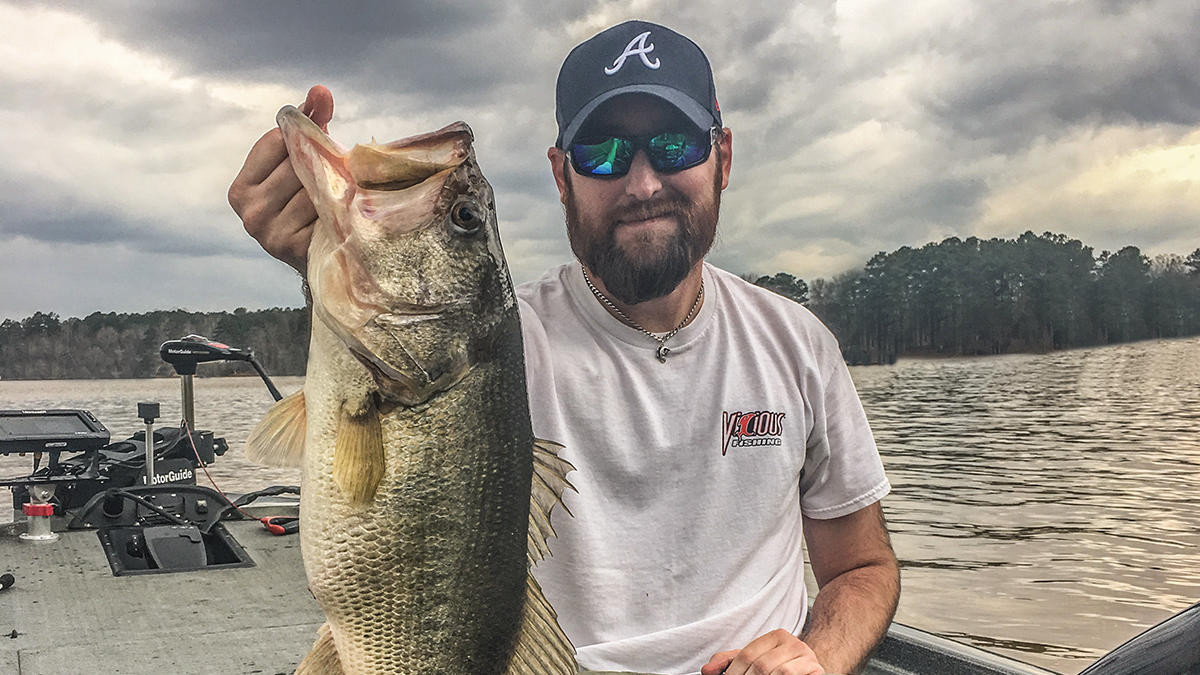
What’s so great about seawalls?
Especially in dirty water, seawalls are incredibly productive targets when searching for big bass. In human terms, I liken dirty water to a smoke-filled room. If you’re in a smoky room and cannot see anything, what’s the first thing you’re going to do? You’ll start feeling the walls as you search for a door or window.
Bass do something very similar in dirty water. They need to be pressed against something as they rely very heavily on feel and not sight in this situation. So when the water gets muddy in your area, you can bet that there will be an abundance of bass snugged up to the seawalls to better “feel” their way around. These manmade structures give them a hard edge to follow in low-visibility conditions.
For the savvy bass angler, this can be some of the best fishing of the year. Bass certainly still feed in muddy water and to be quite honest, they can be some of the dumbest fish in the lake. If you find ’em on seawalls, they’re not incredibly tough to fool.
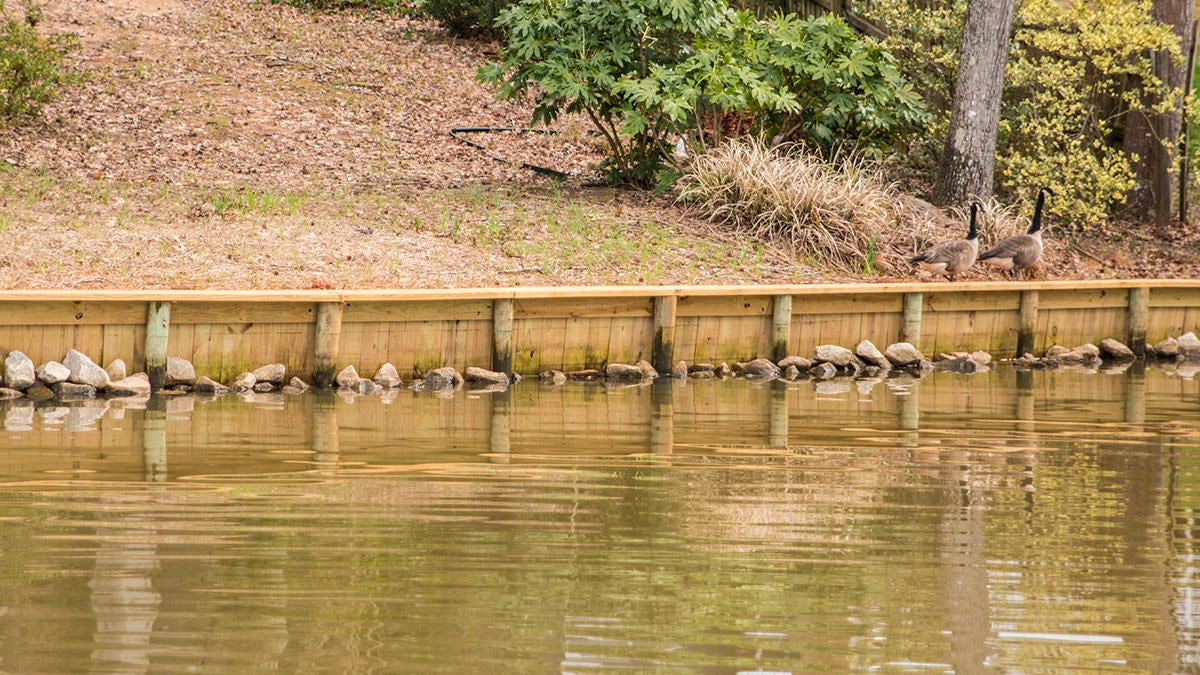
Look for riprap along the base
Some seawalls are adorned with chunk rock along their bases. This rock often extends roughly two to three feet into the water which makes for an outstanding place to find big bass. In my opinion, there are two specific reasons why these types of seawalls continuously produce so much action.
First, crayfish love to hide in the crevices between these rocks and as you might know, they’re a major food source for bass. I’ve never known a bass to pass on a free mudbug. If you catch a fish off of this type of area, make sure to closely inspect its mouth and throat. If you see crayfish pincers or bright-red lips or crushers, you can be sure they’re munching on crayfish. In this case, it’s awfully tough to beat a red-colored crankbait or a jig. It may feel silly pitching a jig down a seemingly bare seawall, but it can work wonders. Just try to target the larger or most irregular pieces of rock you see.
Rock also warms up much faster than wood. Due to heavy winter precipitation and muddy water, you’ll find a lot of bass on seawalls during the colder months. Nine times out of 10, they’ll heavily favor rock over wood.
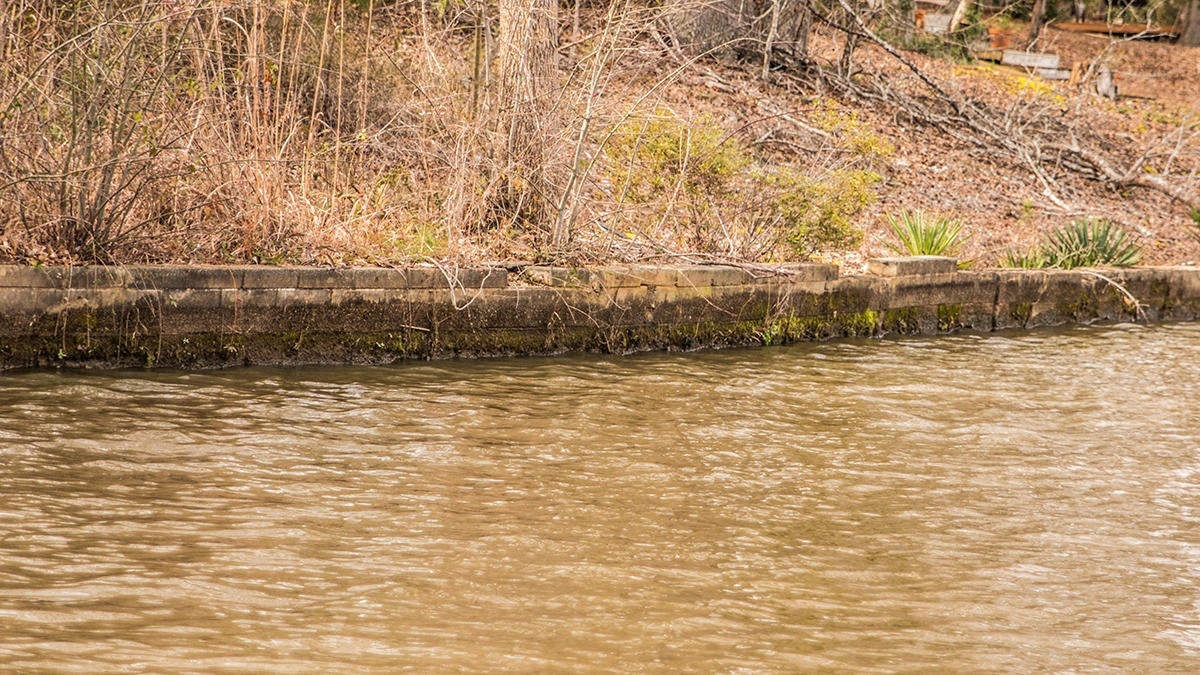
Always make a few casts at concrete
Concrete seawalls seem to be a bit more prevalent on older lakes, but nonetheless, they’re great places to find big bass. Much like riprap, concrete warms quickly and holds heat longer during cold conditions, which seems to have a magnetic-like pull on nearby bass looking to warm themselves. As the year progresses, you can fully expect to find some impressive shad spawn activity on these concrete seawalls as well.
Fishing these seawalls is straightforward and we shouldn’t overcomplicate it. If it’s a fairly featureless stretch of seawall, I like to make parallel casts very close to the concrete and use a slow retrieve. You’ll have success on crankbaits, Colorado-bladed spinnerbaits and bladed jigs.
Based on my personal experience, older concrete seawalls tend to outproduce newer ones. I’m not entirely sure why, but I feel like baitfish feed on the algae living on the old concrete and of course, where there’s bait, there’s bass.
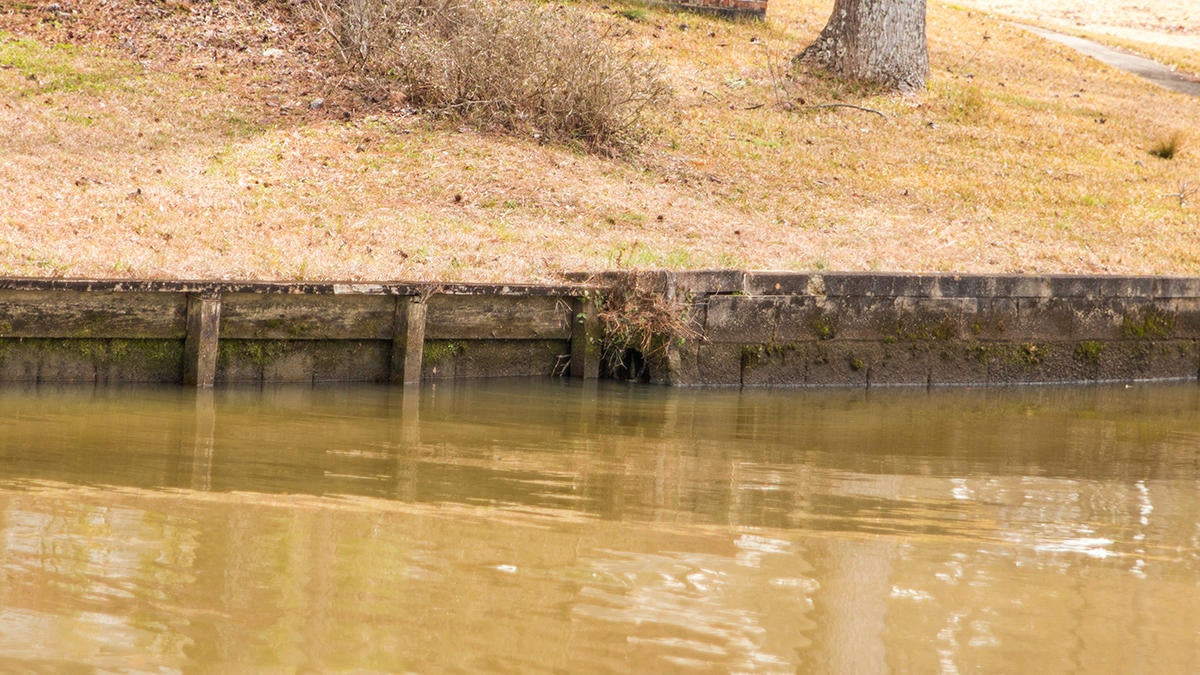
Keep an eye out for material changes
I’ll never forget working with legendary pro angler Larry Nixon years ago when he told me one of the most sensible pieces of advice I have heard.
“Bass love anything different,” he said. “When a straight edge changes, there will be a bass there.”
I took that advice to my home lakes and wouldn’t you know it, it worked wonders when targeting seawalls. I have found that whenever a seawall switches from concrete to wood or vice versa, bass tend to congregate in that area. Often times these material changes create a small divot that bass will relate to and use as strategic ambush points.
Consider casting parallel to the change with some sort of moving bait. If you don’t get a bite, don’t be afraid to soak the surrounding area a bit more with a Texas rig or jig.
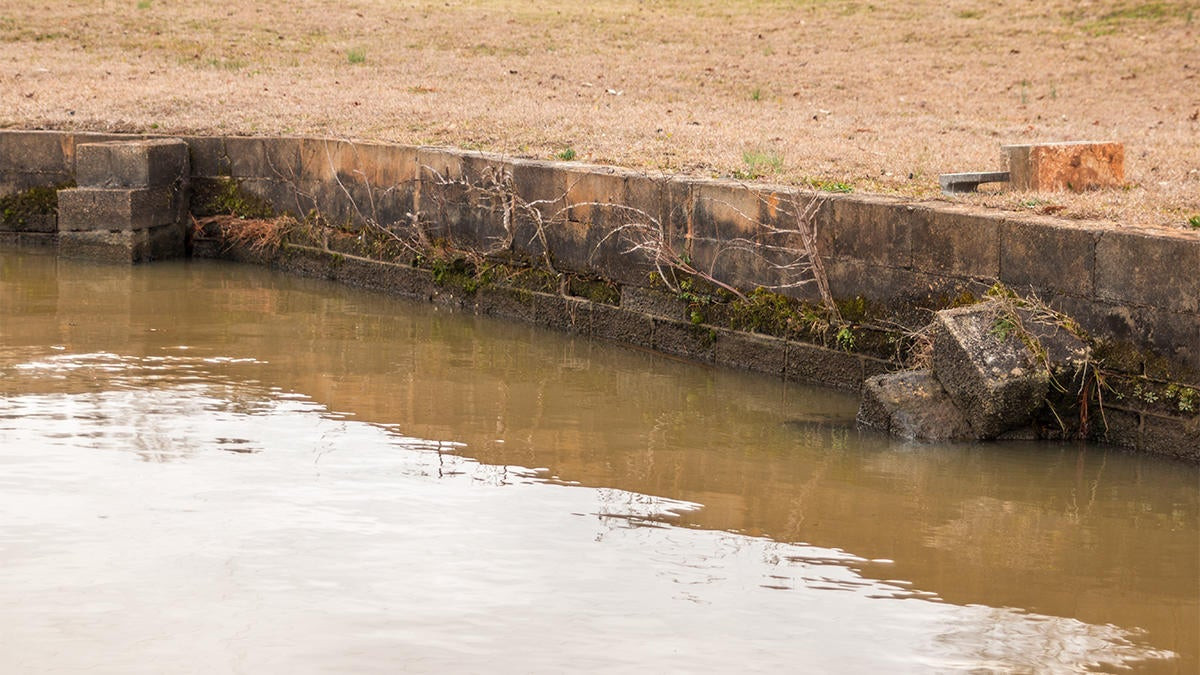
Cinderblock supports are perfect ambush points
The biggest bass I’ve ever caught on my home lake came off of cinderblock supports in front of a old concrete seawall. It wasn’t a fluke, either, because the same stretch continues to produce quality bass for me throughout much of the year. I’ve been able to duplicate this on other lakes too, so I’ve put a lot of thought into what makes them so special.
Because these cinderblocks are most often found in shallow water, I can see a lot of my bites. Granted, it’s dirty water, but I can see the fish swirl on my wake bait, bladed jig or spinnerbait. And guess what? They all come from the down-wind or down-current side of the cinderblock. Nearly every single one for the last decade.
This tells me that the bass are using these areas as ambush points. They’re letting the current do the work for them by sitting in the eddy and attacking forage as it drifts by. Because of this, it’s imperative to cast your lure past the cinderblock supports and bring it within an inch or two of the structure. Make sure you’re casting up-current (or into the wind) and retrieving your bait with the current. If you can knock your lure into the support, you’ll often be able to draw a instinctual reaction strike.
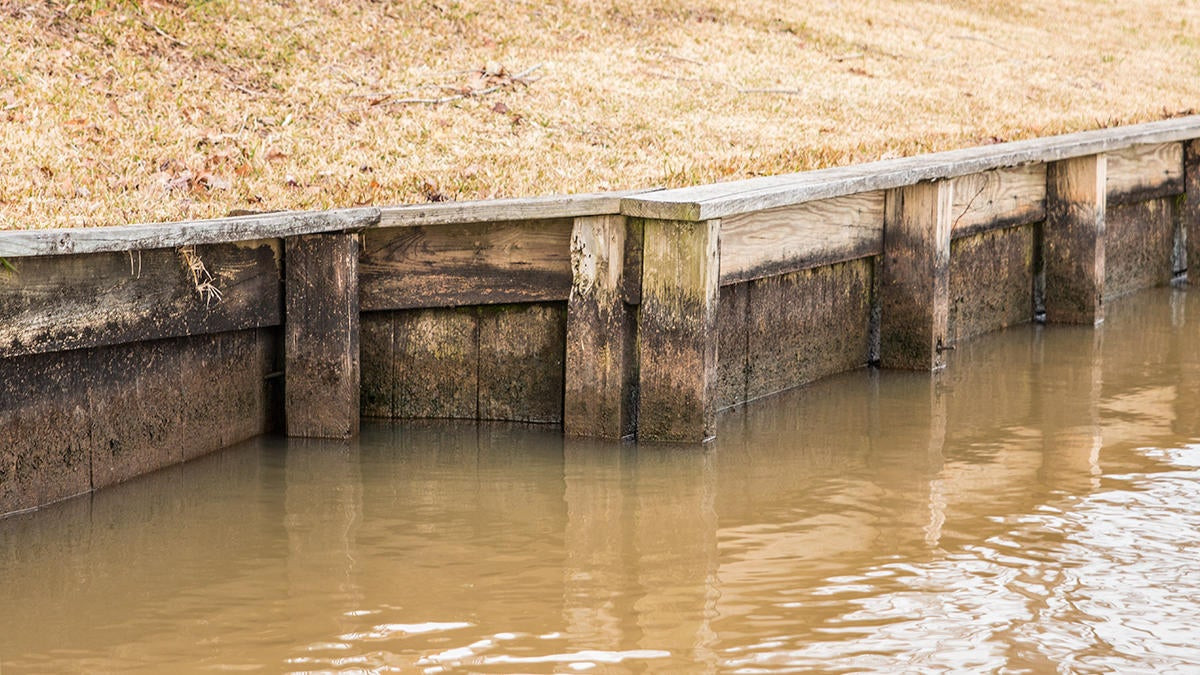
Small divots are just like a carport for bass
I guess “divots” is the right word to describe this. You could also call them irregularities or small indentions. Whatever the proper term is, these spots can produce some great and easy-to-pattern action, even in tough fishing conditions.
Much like the cinderblock supports we just discussed, bass use these small indentions as ambush spots and again, they let the current do the brunt of the work for them. Much like you’d back your truck into the garage, bass will back into these small areas and hide while waiting for the perfect feeding opportunity. It’s important, however, to target the indentations that are working well with the current.
In the photo above, I had a very slight wind current coming from the right side of the picture to the left side. It was a perfect situation for a big bass, as the bass could conserve energy in the eddy created by the seawall while simply waiting on an unsuspecting baitfish to pass by.
If the current were moving in the opposite direction, from left to right, I’d be much less inclined to stop and fish this area.
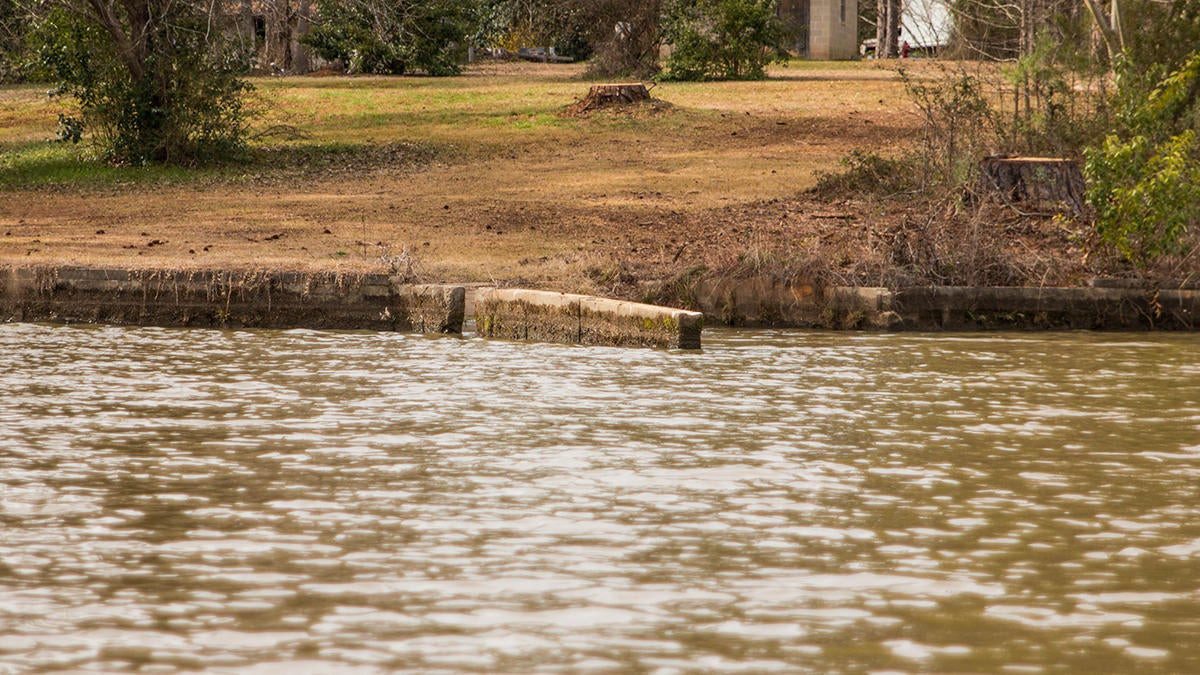
Boat ramps can be major hotspots
True, they’re not really part of the seawall, but residential boat ramps interrupt the straight lines of the owners’ seawall and as we discussed earlier, any irregularity is a good thing. Boat ramps can be one of the hottest and least talked-about pattern in the winter months. Whether you’re casting a jig or a crankbait to them, they should never be ignored.
As the water warms, you’ll often see bass corral baitfish in the 90-degree L-shaped area where the seawall ends and the boat ramp begins. Pay close attention to this and have some sort of soft jerkbait ready to cast immediately once you see something break the surface. They’ll usually bite it within seconds of hitting the water.
The ends of these ramps can also be quite productive and easy to pattern lake-wide. If the boat ramp is used regularly, there will often be holes from the prop wash of power-loading boats onto their trailers. Bass will sit in these holes all year long. If the boat ramp is pretty run-down like the photo above, the concrete is normally covered in algae which attracts baitfish and creates a virtual buffet for nearby bass.












